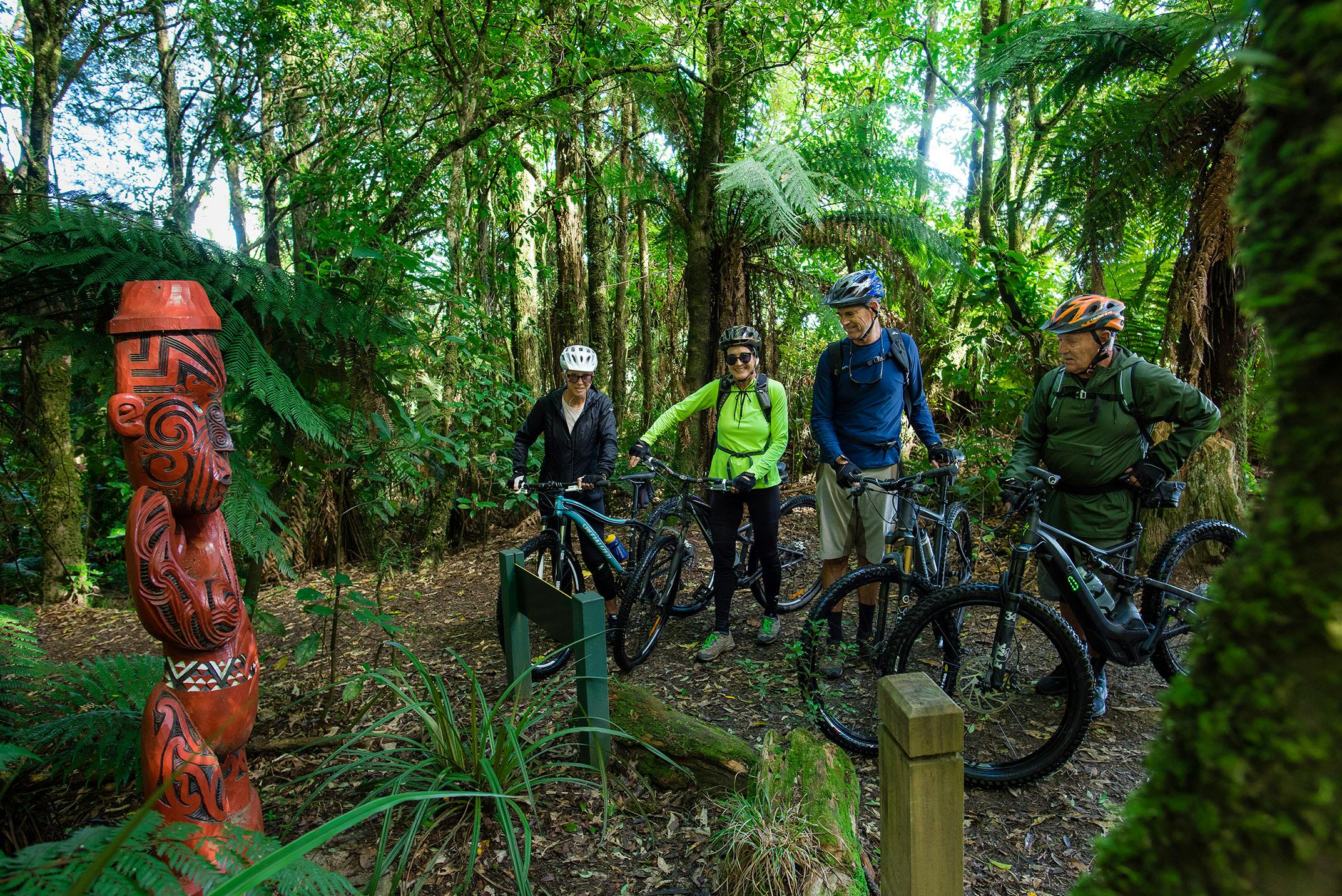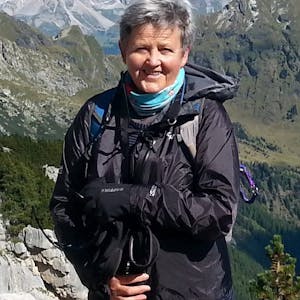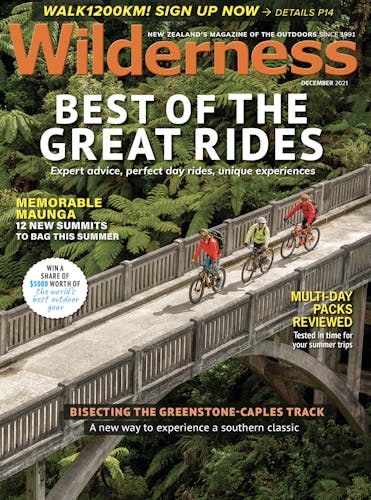The cycle trails were conceived to bring economic benefits for the regions. It turns out they are generating much more.
Jobs, community and social engagement, ecological restoration, health, wellbeing and huge local pride are emerging positives of Ngā Haerenga, the New Zealand Cycle Trails. On some trails, those involved say these are the real benefits, over and above economic return.
And for many riders, the trails have become more than just a bike ride as they engage with the locals, immerse themselves in trail history, landscapes, and produce, and the manaakitanga with which they are welcomed.
Rob Kakahi (Ngati Maniapoto) is a shuttle driver for Timber Trail Shuttles and Bike Hire. He’s a former King Country rugby player who previously worked for the railway and then as a guide for Forgotten World Adventures. He sees his role as much more than driving.
“You’ve got an hour with your people in the bus,” he says. “They’re from out of town and want to hear the stories – the history, about Ngati Maniapoto and the King Movement, and Pureora and the logging and treetop protests.
“I try to sell the town, do the marketing for all the people who created this employment for us here. We’re a community working together.”
Kakahi’s boss Victoria Dawson says the company is big on history, and on hiring locals.
“Our drivers are all from here and have farming backgrounds or ties to milling families, or they are iwi and their whakapapa is important to them,” Dawson says. “So it’s not just a trip in the bus for our clients; they also hear the local stories and by the time they start their ride they are immersed in the region they will be riding through.”
The company also employs two local bike mechanics. Dawson has put them through training and established bike mechanic internships ‘work experience’ for local high school students.
Since 2019, the shuttle fleet has grown from three vans to two vans and two 22-seater buses, in sync with the growth of the Timber Trail Lodge, which opened at Piropiro, at the 85km trail’s halfway point, in 2017.
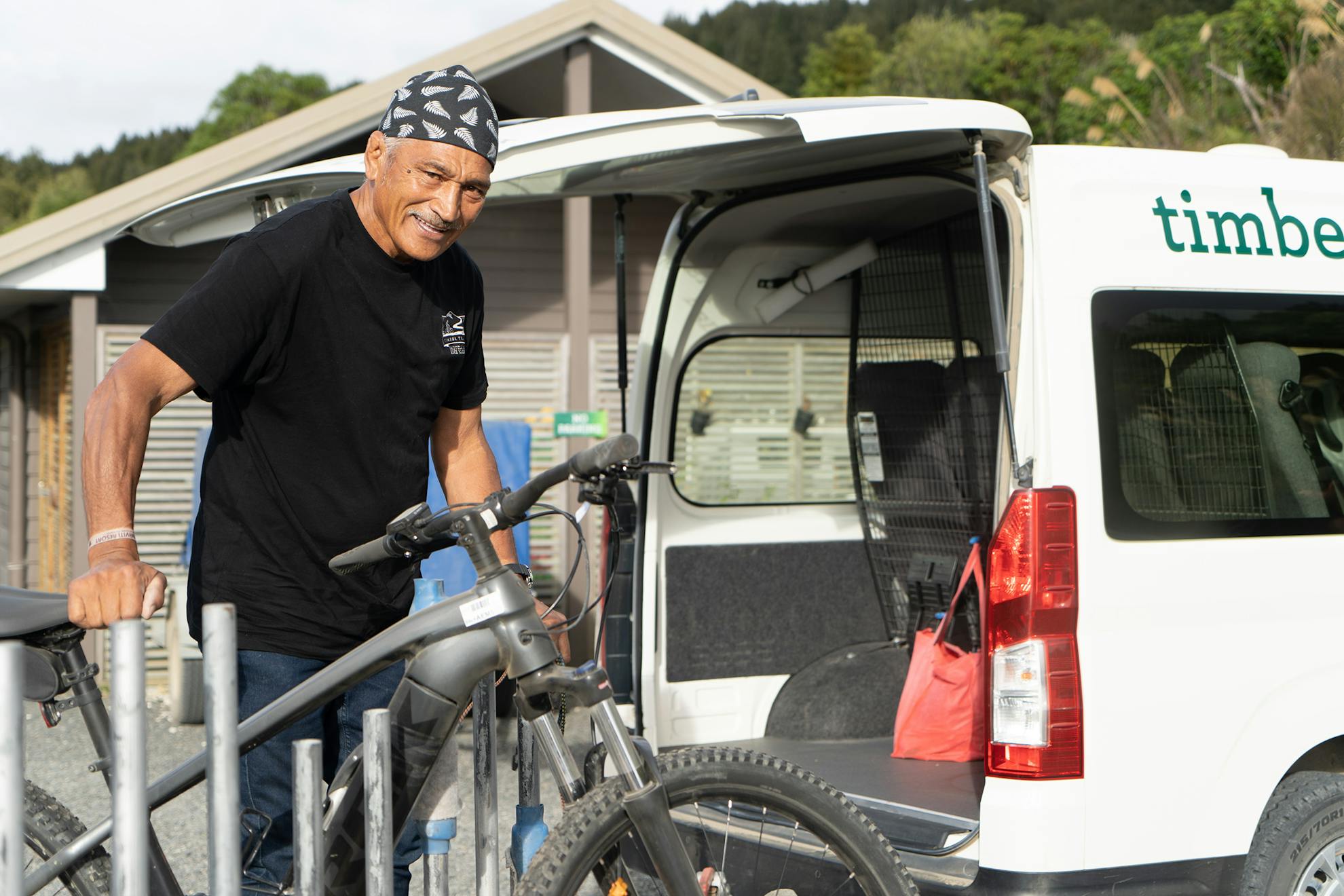
Initially, without any serviced accommodation at this main entry/egress point, the trail was expected to peak at about 5000 riders a year, says Bruce Maunsell, Timber Trail Lodge director.
“Numbers for the 2019/20 season were around 10,000,” he says. “This season to June, there were a little over 20,000.”
Maunsell says the growth has been accelerated by the pandemic and includes a lot of “silver heads on e-bikes with money to spend”.
Increasing numbers of Te Araroa walkers also walk the trail.
The stylish yet homely 20 room Timber Trail Lodge was built and operates on strong sustainability principles, such as its environmental building design, local biodiversity restoration, ‘buy local’ initiatives and employment of local staff. Recently-appointed lodge manager Haley Kete (Ngati Maniapoto, Tainui) grew up in Waitomo, where she worked with Black Water Rafting and managed a local backpacker business. She has also worked in Kaikōura and Australia and is now happy to have the opportunity to work in tourism, and to welcome visitors, just 30-minutes from her home.
“We employ locals to support the community, also it avoids issues related to employing foreign visitors,” says Maunsell. “We see that local staff provide greater continuity and genuine manaakitanga. It is rewarding to see the skill development and confidence that builds among our local staff who have had little or no customer service experience.”
Jobs for locals have also been generated by Epic Cycle Adventures and Camp Epic, trail glamping accommodation at Piropiro. South African-born Taumarunui-based owner Paul Goulding started running shuttles and bike hire in 2013 with one van and a trailer. He now operates five.
Goulding saw the potential for the flash camp which is loosely designed on the African safari lodge concept with a Kiwi twist. Currently, 14 tents accommodate up to 28 people with larger tents, some with outdoor baths, in the pipeline.
“We have four full-time employees year-round and six between October and May, plus we have about eight part-timers doing housekeeping and shuttle driving,” Goulding says. “A number of local companies also benefit from our business: building supplies, vehicle maintenance, engineering and accommodation.
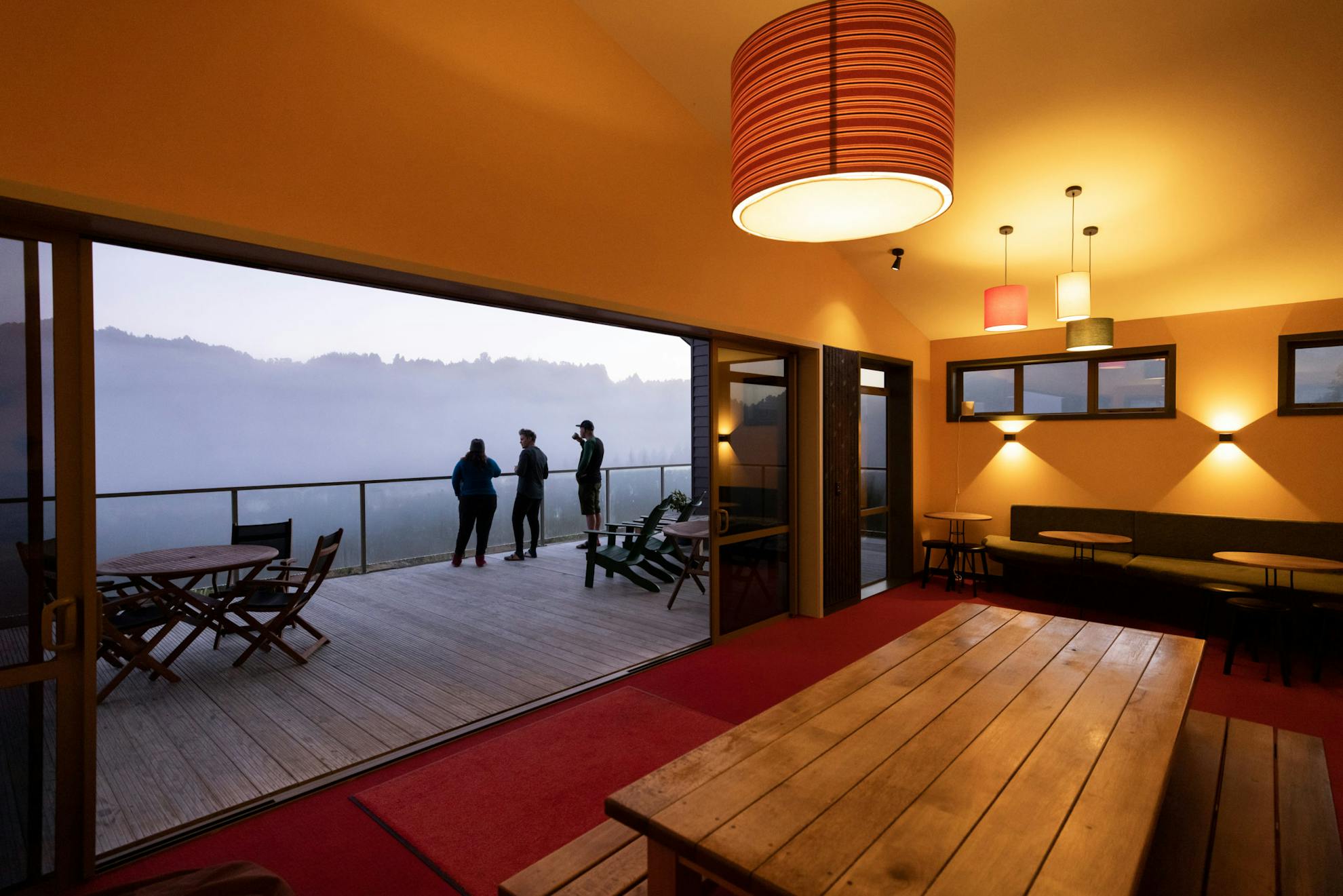
“There has been a surge of B&Bs in the region to host trail riders.”
At Blackfern Lodge, six kilometres off the trail, Rachel Dey and Mark Tuffin are staunchly focused on community and conservation, as they expand their business to meet demand.
“We moved here to a lifestyle block because we wanted to live off the land and be self-sustaining,” says Dey. “When the trail opened we built the lodge, then converted a woolshed for more accommodation. We’ve recently added Blackfern Cottage, in Ōngarue, and Blackfern Boutique, in Te Kuiti, to our accommodation, plus shuttle and bike rental services.”
Staff hours are deliberately flexible, she says, to make it work for locals around school and other commitments. “My philosophy is to empower the locals and to help people get back into community life,” Dey says. “We want to provide opportunities that people in remote rural areas wouldn’t otherwise have.”
Guest feedback typically highlights the bush and the birdlife. The ‘blue ducks by the waterfall’ are often mentioned. Dey says community-based conservation, through the Blackfern Ecological Restoration Project, includes a huge volunteer predator control effort in partnership with the Whio Forever Blue Duck recovery programme.
At the Timber Trail Lodge, guests are invited to contribute to a local predator trapping programme, matched dollar for dollar by the lodge. So far, more than $5000 has been raised.
Local volunteers, trail operators and DOC work together with the Friends of The Timber Trail Inc, established to develop trail infrastructure and improve user experience.
Maunsell says this has included providing water at shelters, picnic tables and seats, with current plans for a shelter at the Ōngarue trail end and shifting an old steam engine for trail-side display.
Lynley Twyman, ‘Trail Champion’ for the Timber Trail, says the trail is now bringing an estimated $7.5 million a year into the local economy. “All the operators are working together,” she says.
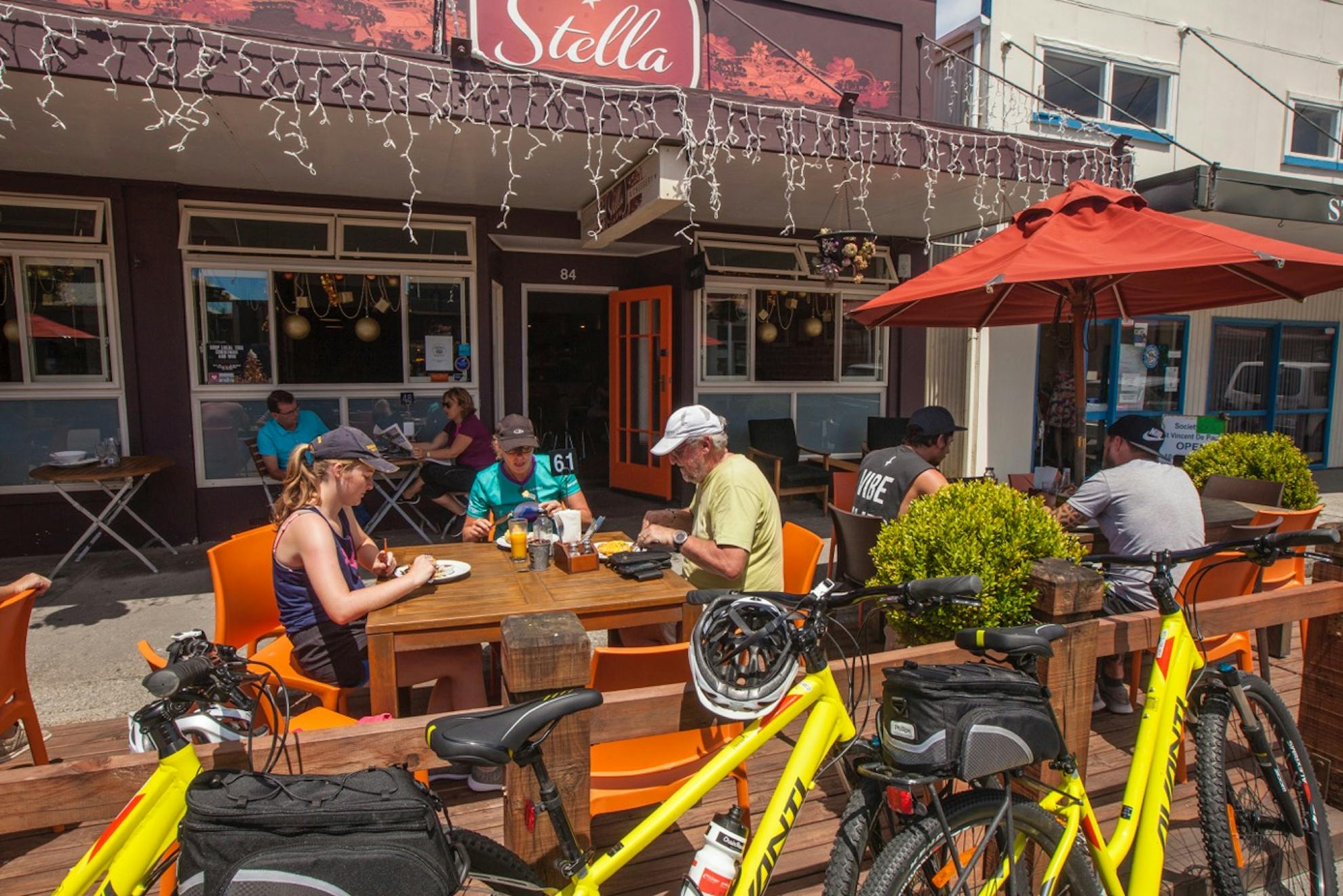
She sees an opportunity for even more community engagement. A few local schools are already using the trail and Twyman is developing a ‘Bikes in Schools’ programme with a curriculum based around the trail, its history and natural ecology.
“There is so much to tell here,” she says.
Across the motu, are the Motu Trails. Despite the economic benefits enjoyed by other trail regions, trail manager Jim Robinson is realistic about the return generated around these more remote trails.
“The trails are helping to enable viable businesses but they are no monster money machine,” he says. “They are dropping a fair amount of money into the district but it is spread widely, and includes a lot of small operators earning modest amounts.”
He is hopeful of some economic improvement with people being attracted to the trails by Kōpiko Aotearoa, the Cape Egmont to East Cape bikepacking event, and Cycle Gisborne, which has introduced guided and self-guided packages.
Robinson is most enthusiastic about the trails’ social benefits. “I believe that, across all of the New Zealand Cycle Trails, the importance of their social benefits to the local communities have yet to be fully realised
“Around here, they’ve brought people together. Lots of locals are using the trails. On the Ōpōtiki Dunes Trail there are morning walking groups, the Thursday cycling group and people walking their dogs before work. Motu and Matawai schools do an annual ride down the Motu Road, and Ōpōtiki College incorporates the trails into their outdoor experience and cross country programmes.”
As well, there are all the trail-related community events, like planting days. “About 30 or 40 volunteers are involved each year. In the past seven years, they have bedded-in thousands of plants along the Dunes Trail, as part of a massive environmental restoration programme. The trail has been transformed from its previous environmentally degraded state.
“Cycling the trail now is a whole different experience.”
The Motu Trails Charitable Trust employs Robinson to manage the trail and eight volunteer trustees, plus at least 10 more community volunteers, pitch in to help with trail enhancements. Signage, seats, pou whenua and three new shelters have been installed in the past two years.
In 2020, the trust took on greater responsibility for the Dunes Trail and more challenging Pākihi Trail. The old pack track is cut into the wall of the spectacularly steep Pākihi Gorge, and slips are ongoing. While DOC assists with major storm damage, the trust has some funding to employ local contractors, for up to three days a week, to keep it clear.
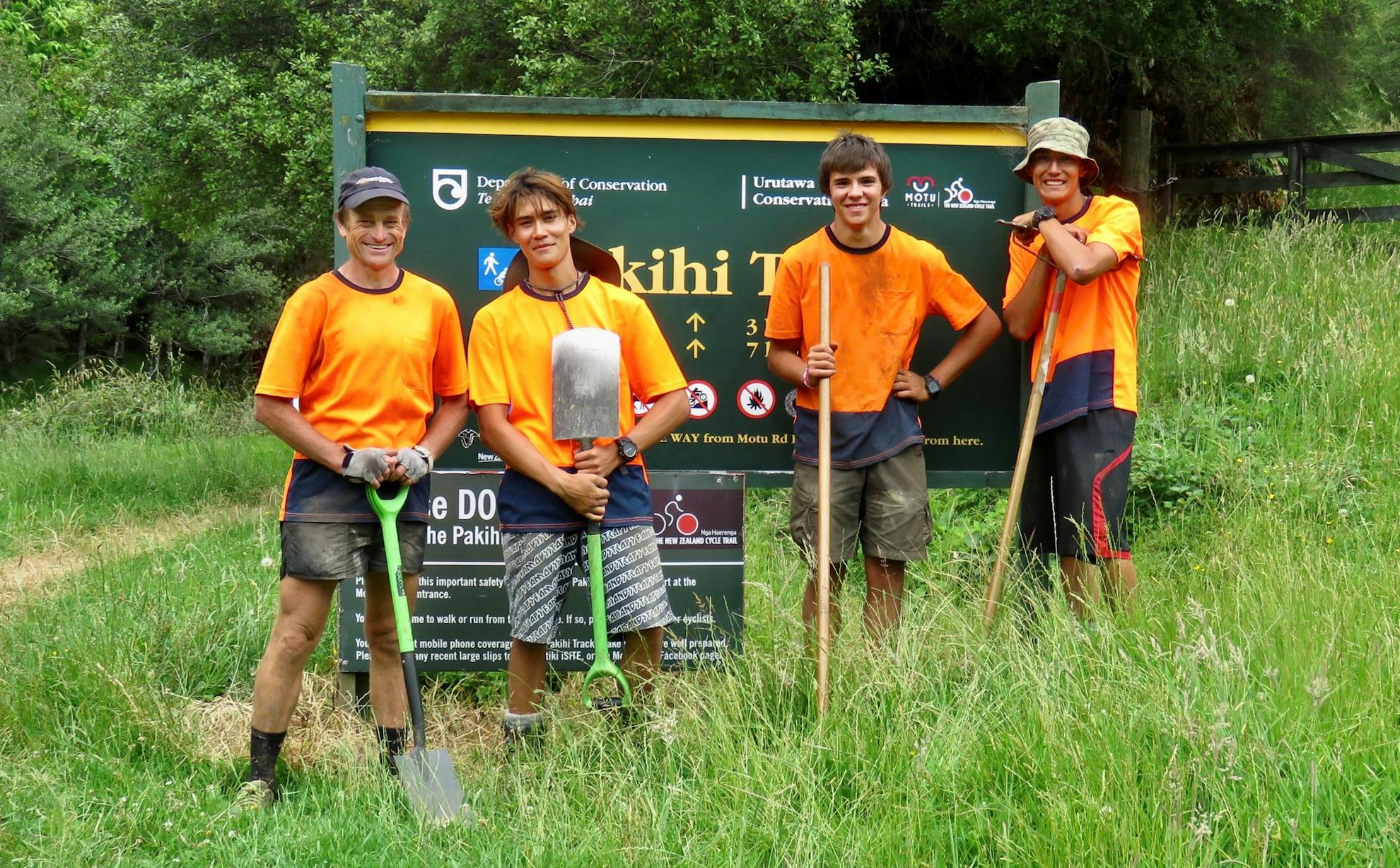
“These young guys can earn some good money, but it’s really hard physical work,” says Robinson. “Pākihi suits old-school labour because you can’t quickly get a machine up there, and most weeks you’ll have literally cubic metres of rock and gravel to clear. Spades, rakes, pruning saws and pickaxes are the most useful tools.
“The typical workday has you walking 20km, raking as you go, plus some solid raking and spadework for three to four hours.
“Do it fast and do it often is the only way to keep the track in good condition.”
Robinson says it all highlights the importance of the local community in keeping some trails alive.
“For the long term resilience of the trails, we need more people riding them, that’s why the push now is to keep the trails in consistently good condition to build up reliability.”
It’s different on the more accessible southern trails. South Island cycle trails have been the catalyst for local investment and brought significant economic value to their communities, says Cycle Journeys owner and West Coast Wilderness Trail Trust chair, Geoff Gabites. As a company, Cycle Journeys contributes directly towards trail maintenance through a $3 bag transport levy per customer. In 2020 the company raised more than $32,000 for the Alps 2 Ocean and $12,000 for the West Coast Wilderness Trail.
“Many communities and individuals have shown real entrepreneurship, particularly in accommodation,” Gabites says. “Locals have made spare rooms available while larger houses have been converted into high standard hosted accommodation.”
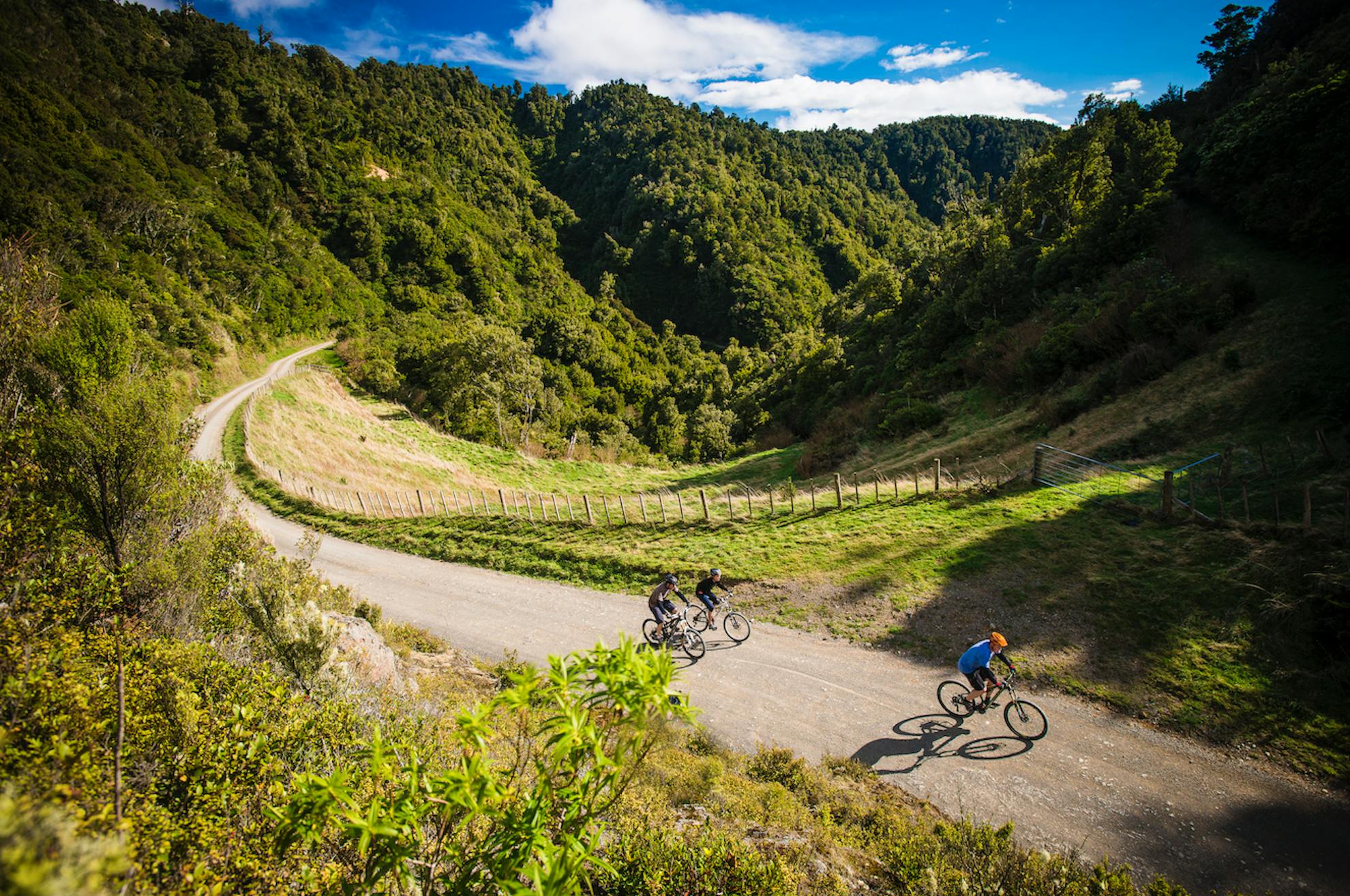
He cites the Theatre Royal Hotel and adjoining accommodation that’s brought new life to Kumara on the West Coast Wilderness Trail. On the same trail, Scenic Waterways offer cruises on Lake Mahinapua, plus hosted accommodation with a local food focus on the menus.
On the Alps 2 Ocean, Gabites mentions Waitaki Braids, an Oamaru stone farm building converted into stunning accommodation and a busy daytime café, and the former Enfield School, now converted into a fully hosted, five star B&B with the local pub providing dinners.
The evolution of the A2O has seen small rural settlements such as Ohau, Otematata, Kurow, Duntroon and Enfield have vibrancy breathed back into them, adds Marg Munroe, general manager Tourism Waitaki.
“Businesses that once focused on servicing farming have now scaled up as a result of the trail,” she says. “It’s now normal to see clusters of riders hanging out at cafes and pubs along the trail.”
But Gabites agrees with Robinson that the cycle trails are stimulating something more than economic growth.
“We are now seeing how the trails are also generating significant health and wellbeing benefits for their local communities,” he says. “Many locals walk and ride the trails. They have also provided identity and a strong degree of local pride and community engagement.”
As Rob Kakahi, driving on the Timber Trail, says: “This is a place you can take for granted when you live here, and then you bring other people in and they start talking about how beautiful it is.”





